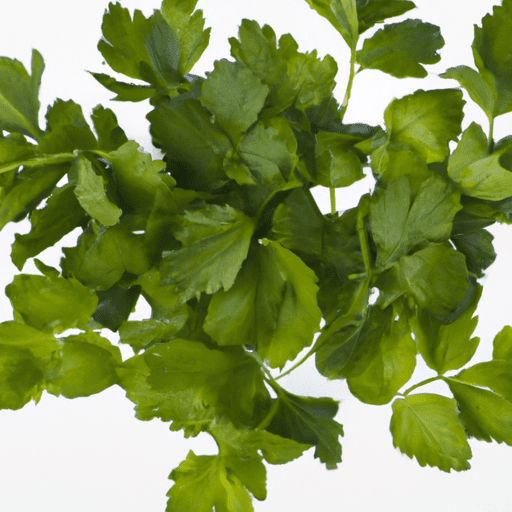The Versatile Wonder: Exploring the World of Crisco
When it comes to versatile ingredients in the kitchen, Crisco is undoubtedly a front-runner. No pantry is complete without this marvelous creation that has revolutionized the culinary world for over a century. Crisco, known for its white, solid appearance, is an all-vegetable shortening that can transform the way you cook and bake. In this blog post, we will delve into the world of Crisco, uncovering its taste, common uses, nutritional value, and fascinating historical tidbits.
Unraveling the Taste of Crisco
Crisco possesses a unique and distinct flavor that is mild and neutral. Unlike butter or oil, it doesn’t impart any dominant taste to your dishes. It is this neutral nature that makes Crisco the perfect kitchen companion as it doesn’t overpower the other ingredients, allowing them to shine in all their glory. The absence of a strong taste ensures that it can be used seamlessly in both savory and sweet recipes, adding a desirable texture without altering the final flavor.
Embracing Crisco in Countless Culinary Creations
1. Baking Beauties
Crisco is an essential ingredient in various baking recipes, beloved for its ability to create light, flaky pastries and perfect pie crusts. Its solid texture at room temperature ensures the creation of a crumbly, tender crust, whether you’re making a delicious cherry pie or a savory quiche. With Crisco, your baked goods will have a delicate mouthfeel and a heavenly texture that will leave everyone asking for seconds.
2. Frying Favorite
Thanks to its high smoke point, Crisco shines brightly as a go-to choice for frying. Whether you’re whipping up golden fried chicken, crispy French fries, or delectable donuts, Crisco’s heat tolerance ensures your creations will turn out beautifully without succumbing to a greasy finish. Its solid form lends itself well to deep frying, allowing for even and consistent heating, resulting in crispy, perfectly cooked delights.
3. Stellar Substitution
Butter, while undeniably delicious, can sometimes hinder the texture of certain recipes. Crisco, on the other hand, acts as a fantastic substitute. For those with lactose intolerance or dietary restrictions, Crisco’s versatility allows you to recreate butter-based recipes with ease. So whether you’re baking cookies, cakes, or pie crusts, Crisco readily steps up to the plate, ensuring your delectable creations turn out impeccably.
Nutritional Nuances
Understanding the nutritional value of the ingredients we use is crucial to crafting a wholesome diet. While Crisco provides a sumptuous cooking experience, it’s important to note its nutritional composition. Crisco is trans-fat free since 2004, meaning it contains no artificial trans fats. However, it remains a solid vegetable shortening and is an excellent source of healthy fats. Moderation is key, as Crisco does contain saturated fats, which should be consumed judiciously.
Where It All Began
The story of Crisco is not only fascinating but also reveals how innovation can shape the culinary landscape. Created in 1911 by Procter & Gamble, Crisco became the first shortening made entirely from vegetable oil. It replaced traditional animal fats, such as lard and butter, which were commonly used for cooking and baking at the time. Crisco’s introduction sparked a revolution in the kitchen, offering a lighter, more affordable alternative.
Fun Fact: Crisco’s Role in American History
During World War II, Crisco became a vital component in the production of munitions. The U.S. government called upon Procter & Gamble to supply glycerin urgently needed for the war effort. As an alternative to animal fats, Crisco provided the necessary raw materials for the production of explosives, demonstrating its versatility and importance in unforeseen ways.
Embrace the Power of Crisco
In conclusion, Crisco remains a truly remarkable addition to any kitchen. Its neutral taste, wide range of applications, and fascinating history make it an invaluable ingredient and a staple for bakers and cooks alike. So, whether you’re seeking to elevate your pie crust game, craft mouthwatering fried foods, or experiment with alternative fats, let the versatile wonder of Crisco enhance your culinary adventures.
Sure! Here are some interesting facts about Crisco:
Origin: Crisco is a brand of shortening that was introduced by Procter & Gamble in 1911. The name “Crisco” is derived from “crystallized cottonseed oil.”
Common Uses: Crisco is primarily used as a cooking and baking ingredient. It is often used as a substitute for butter or oil in various recipes, including pastries, cakes, cookies, and pie crusts. In addition to baking, some people also use Crisco for frying food due to its high smoke point.
Nutritional Benefits: Crisco is made from vegetable oils and is cholesterol-free, which can be beneficial for individuals who need to limit their cholesterol intake. It is also lower in saturated fat compared to butter, making it a popular choice for those watching their saturated fat consumption.
Unique Properties: Crisco has a smooth and creamy texture, which makes it easy to incorporate into recipes. It is solid at room temperature but melts easily when heated, which contributes to its versatility in cooking and baking.
Historical Significance: Crisco has had a significant impact on the history of cooking. When it was introduced, it became one of the first commercially successful vegetable-based shortenings. Its popularity grew quickly, as it was inexpensive, had a long shelf life, and was considered a healthier alternative to animal fats like lard.
Please note that while Crisco has been widely used for many years, opinions on its health benefits have evolved due to changes in nutritional research. It’s always recommended to consult with a healthcare professional or registered dietitian for personalized guidance on dietary choices.




Use the share button below if you liked it.
It makes me smile, when I see it.